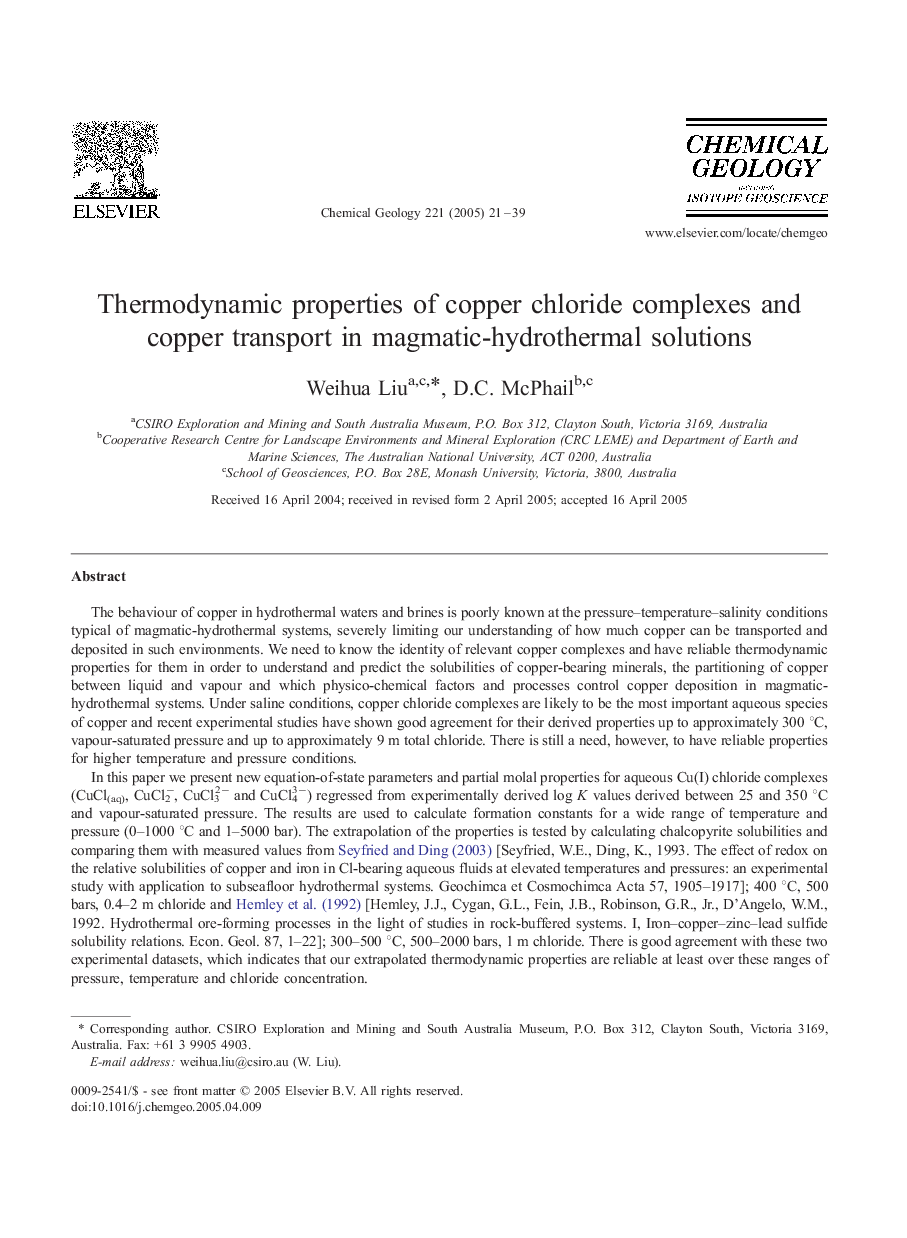| Article ID | Journal | Published Year | Pages | File Type |
|---|---|---|---|---|
| 9529273 | Chemical Geology | 2005 | 19 Pages |
Abstract
The new properties are used to calculate chalcopyrite solubilities under similar conditions of two magmatic-hydrothermal copper deposits for which copper concentrations have been measured in individual fluid inclusions: the Starra iron oxide-Au-Cu deposit, Australia; and the Bajo de la Alumbrera porphyry copper deposit, Argentina. In both cases our calculated copper concentrations are consistent with the measured values in inclusions that trapped pre-mineralising and mineralising fluids. More generally, calculated chalcopyrite solubility at different temperature, pressure, pH, chloride concentrations and oxidation states indicates that hypersaline, neutral-weak acidic, and intermediate-reduced brines can transport thousands of ppm copper at 400 °C and above, raising interesting questions about the interpretation and importance of liquid-vapour partitioning of copper. Although cooling is probably the major factor responsible for copper deposition in magmatic-hydrothermal environments, fluid mixing, boiling and fluid-water interaction may be more important in other geological environments, e.g., iron-oxide-copper-gold and epithermal ore deposits.
Related Topics
Physical Sciences and Engineering
Earth and Planetary Sciences
Geochemistry and Petrology
Authors
Weihua Liu, D.C. McPhail,
